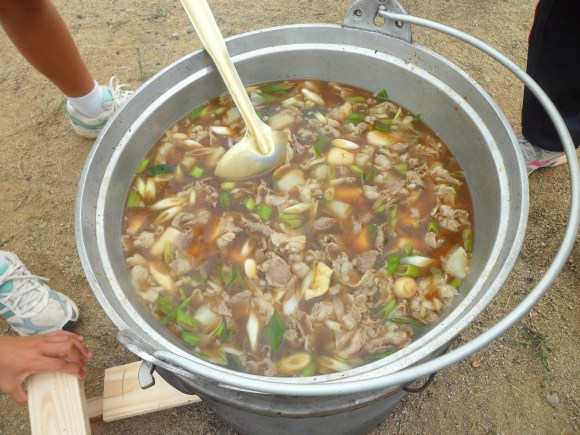
Hop on a train to off-the-beaten-path Yamagata Prefecture any weekend from September through November, and you’re bound to see crowds of people congregating and cooking pots of something delicious by the local river. Yup, imoni-kai season is in full swing!
Imoni (芋煮) is the name given to a taro root stew native to the Tohoku region of northern Japan. Apart from its delicious taste, imoni is also famous for the social aspects of its creation. Families traditionally congregate on a riverbank (the practice of which is known as imoni-kai, literally, “imoni gathering”) and cook the stew from scratch over a fire pit. In that sense, you can think of it a bit like an autumn version of o-hanami, the popular Japanese tradition of viewing cherry blossoms in the spring.
Join us after the jump for a glimpse at a unique cultural tradition of northern Japan which many Japanese people in other parts of the country have never even heard of!
The dish known as imoni is most famous in Yamagata Prefecture, however, it is also consumed in bordering Miyagi Prefecture. While the style of broth may vary slightly from region to region (a soy-sauce base in Yamagata City versus a miso base on the coast), the basic ingredients of imoni remain the same. The main ingredient is satoimo [芋], a kind of tuber which is also called taro root in English, and from which imoni gets its name (ni [煮] refers to a simmered dish). Other common ingredients include thinly sliced beef (or pork), onions, and occasionally kon’nyaku, sometimes rendered as “devil’s tongue” in English. In other words, imoni is the perfect, steaming outdoor treat for a nippy fall day in northern Japan.
▼A typical imoni-kai picnic spread, complimented by onigiri and drinks
▼Imoni served with a side of yakisoba, karaage, and oolong tea
Come the fall, grocery stores in Yamagata often stock special imoni-kai kits which come complete with everything you need for a day’s outing to the river, including a rentable pot, firewood, and chopped, ready-to-go ingredients. Talk about convenience!
▼The banks of the Mamigasaki River in Yamagata City, a typical place for imoni-kai
Although families and friends typically hold their own intimate imoni-kai several times throughout the fall season, there’s a special big event that everyone can look forward to year after year. Yamagata City, the capital of Yamagata Prefecture, hosts an annual imoni festival to celebrate the local dish on the first Sunday of each September. It’s called Nihon Ichi Imoni-kai, or literally, “The Number One Imoni-kai in Japan.” And they’re not joking around–almost the entire city, along with visitors from other parts of Yamagata and outside of the prefecture, gathers on the banks of the local Mamigasaki River to partake of a bowl of imoni, which is prepared in a gigantic iron pot measuring six meters in diameter that must be stirred with construction equipment:
▼The giant iron pot where it rests for most of the year
▼The pot being moved to its location by the river in preparation for “The Number One Imoni-Kai in Japan”
▼What, you thought I was kidding when I said the stew has to be stirred by construction vehicles?
Exactly how much imoni comes out of that pot? Well, to put it simply, A LOT. According to the festival’s official website, three tons of satoimo, 1.2 tons of beef, 3,500 stalks of negi onions, 3,500 packets of kon’nyaku, 700 liters of soy sauce, 90 liters of Nihonshu (Japanese sake), 200 kg of sugar, and six tons of water are dumped into the pot, which is cooked over six tons of firewood to boot! It’s no wonder that so many people are intrigued enough to visit Yamagata for the festival. Even Japanese-Canadian pop rock band Monkey Majik purportedly hops over from their home base of Sendai to have some imoni from time to time!
Here are some more pictures to illustrate the grand scale of the festival:
▼A flier advertising the 26th annual imoni festival, which took place this year on September 14
▼The banner proudly proclaims “Famous product of Yamagata: The Number One Imoni-kai in Japan Fesitval”
▼A bird’s-eye view of the riverbank
▼Despite the massive crowds, the event is well organized with a ticket system and staggered imoni pickup times.
▼The festival also includes pop-up tents selling local products and shows such as this one featuring character mascots of the surrounding regions.
▼Former Yamagata City JET ALTs enjoy their bowls of imoni during the 2012 festival.
▼My own bowl of imoni cooked in the giant pot
Furthermore, in an effort to encourage preservation of the imoni-kai tradition, local Yamagata schools often organize trips to the river to hold imoni-kai. The students do all the work themselves, from starting the fire to chopping ingredients to cleaning up afterwards.
▼Yamagata City junior high school students (US grades 7-9) preparing imoni on a class outing
▼Careful with those knives! I can’t even fathom the administrative hurdles it would take to get permission for American students to do this kind of thing on a field trip…
▼Now that the hard part’s done, all they have to do is sit back, ignore their rumbling stomachs, and wait for it to cook.
▼The finished product. Itadakimasu!
More scenes from class outings:
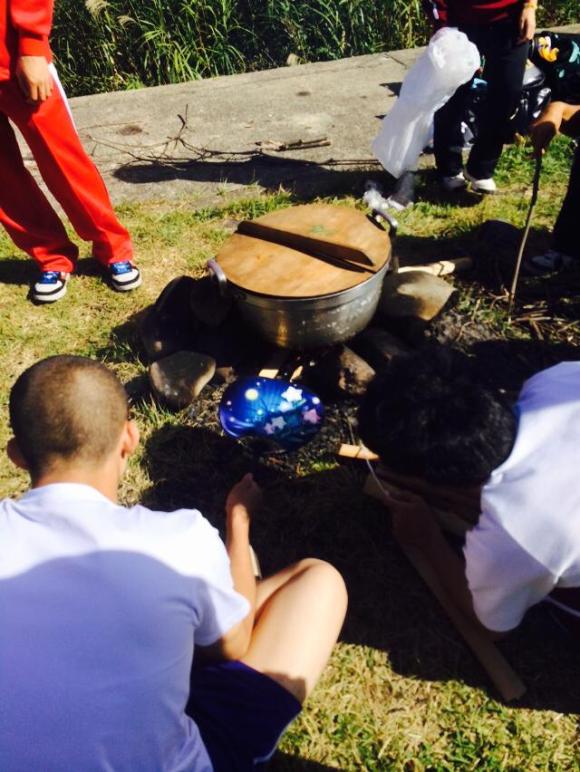
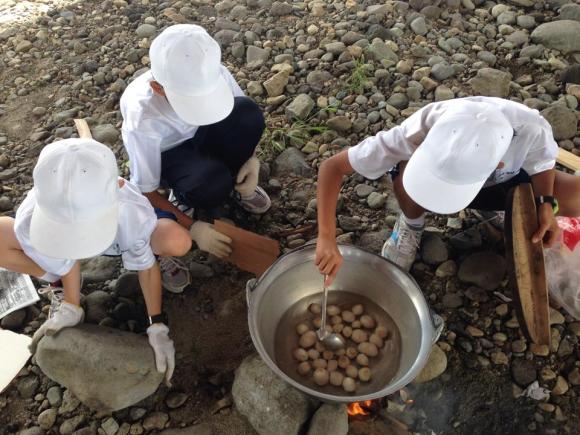
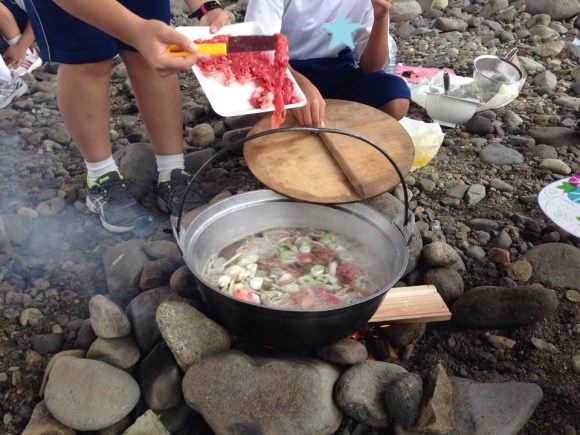
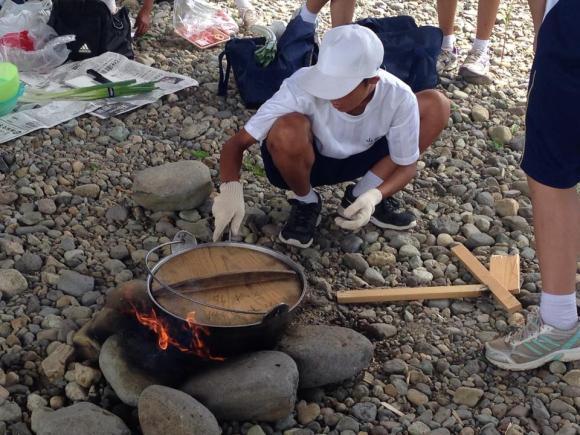
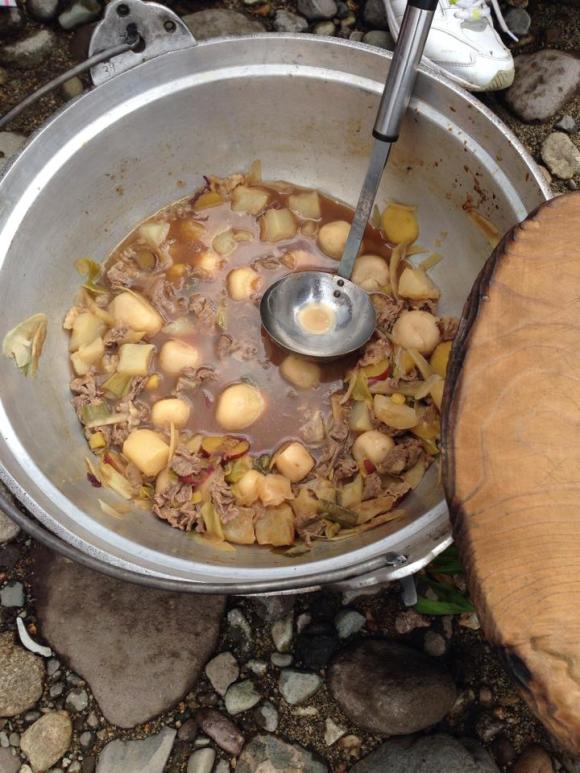
▼My mouth is watering at the sight of it…
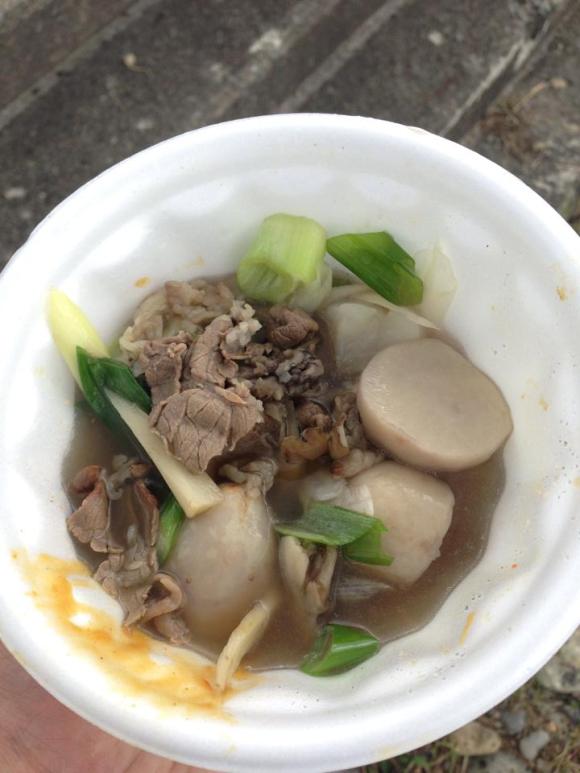
▼Once everyone’s had a bowl of imoni, it’s usual to throw in some udon and let them soak up the remaining broth.
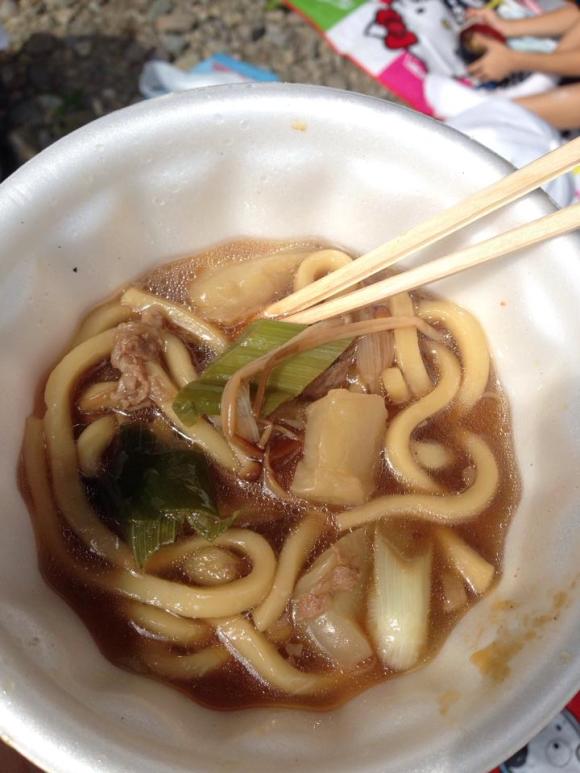
We hope you’ve enjoyed this look at an often overlooked cultural tradition of Japan! I for one would wolf down a bowl of steaming imoni this very second if someone were around to offer me one…
Unless otherwise noted, all images © RocketNews24. “Nihon Ichi Imoni-kai” photos were taken from the Yamagata YEG (1, 2) website. RocketNews24 would like to thank Steven Coull, Lynn Lethin, Darrell Healy, Sam Ghirardello, and Aoife Bradley for their help with this article.

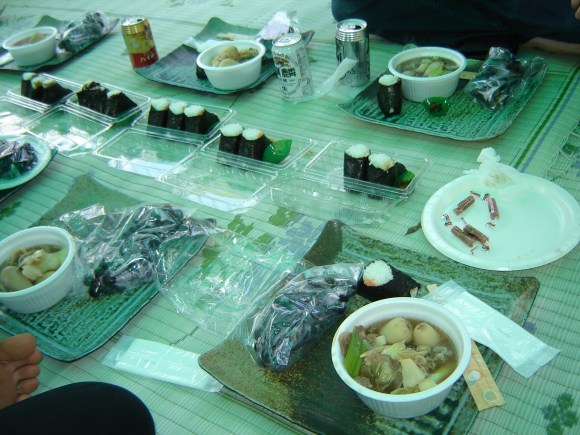
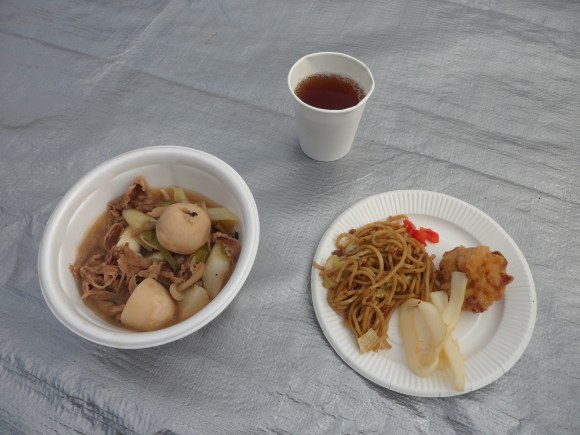
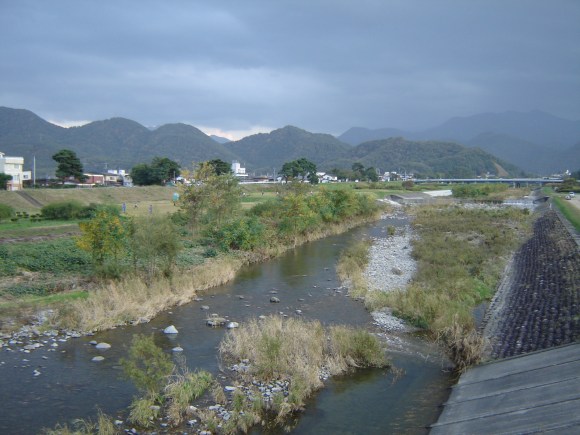
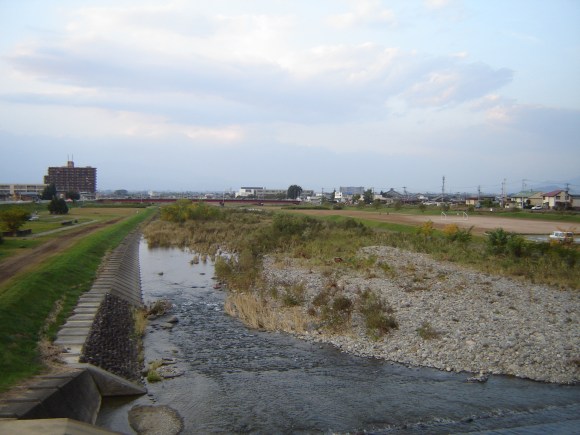
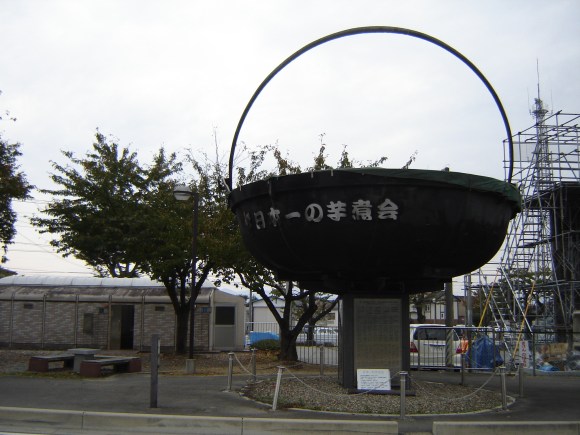
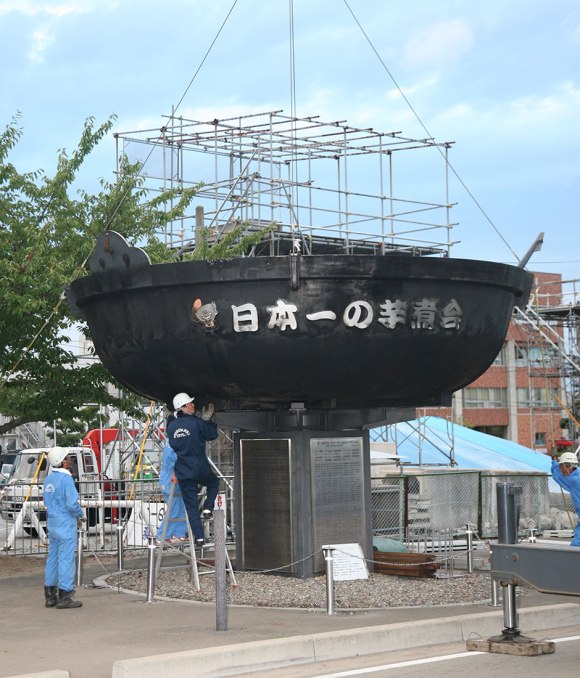
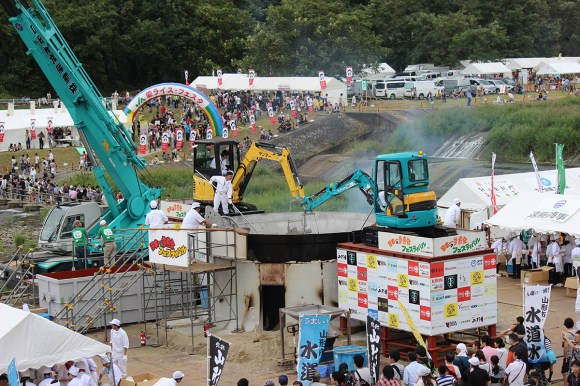

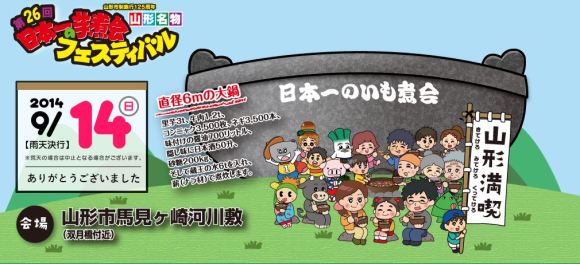
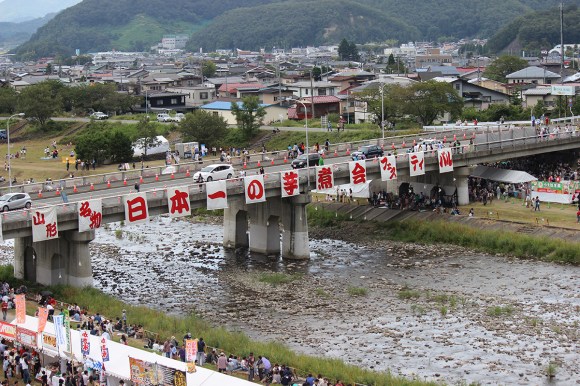
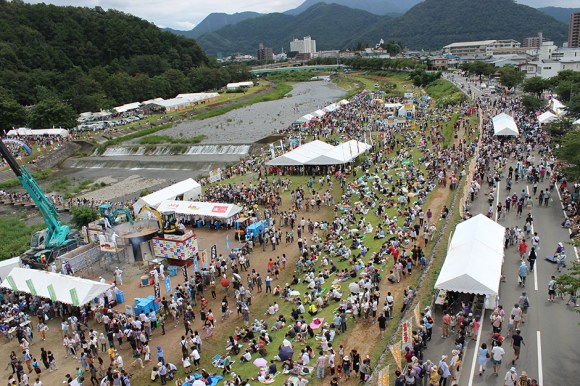
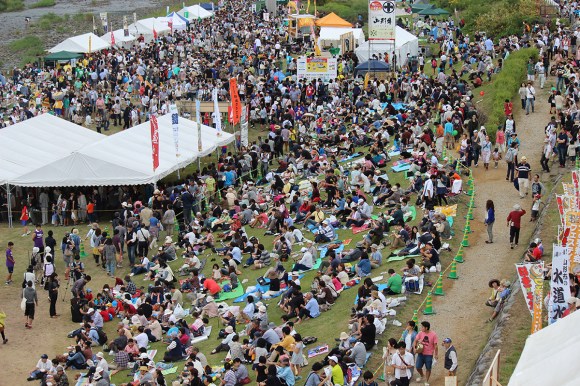
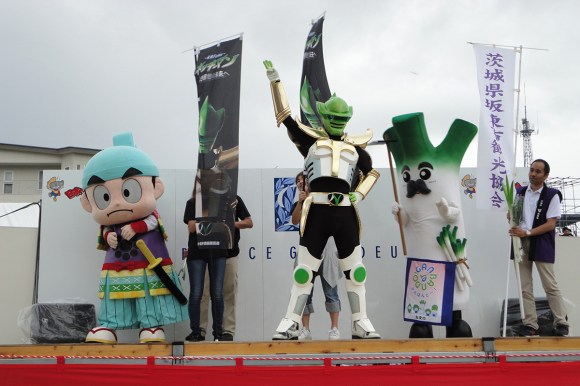



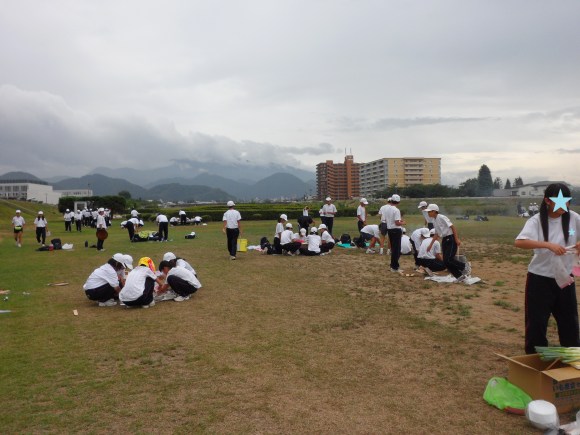
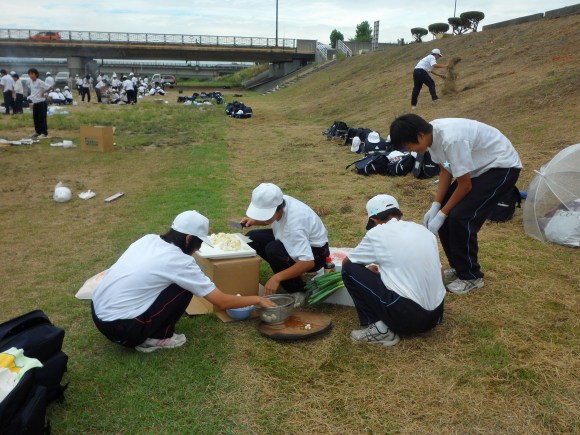
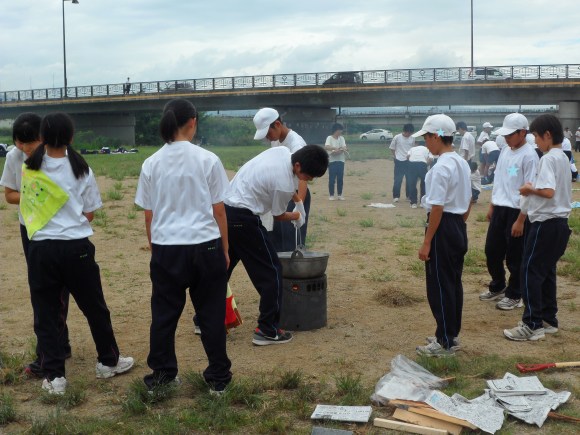
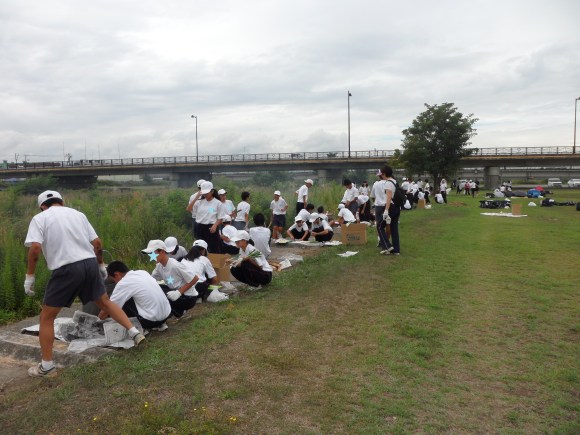
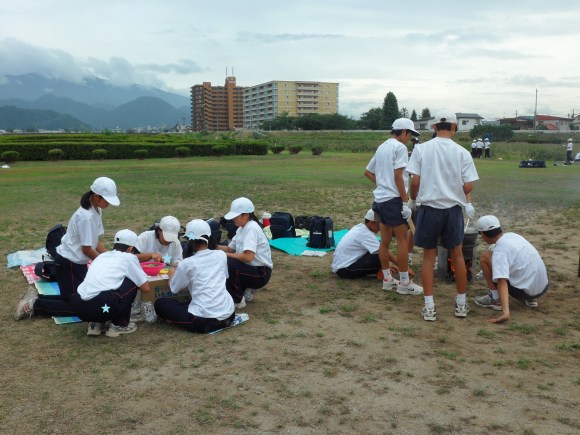
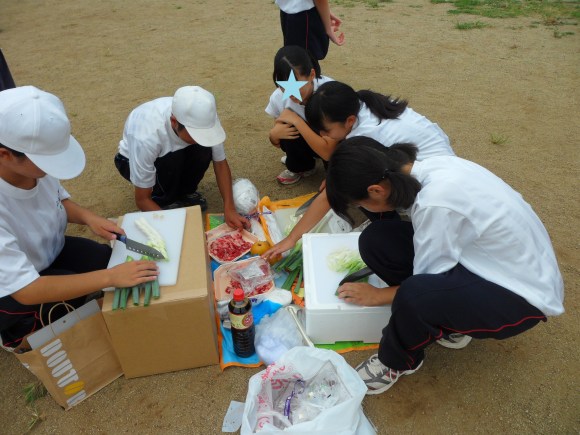
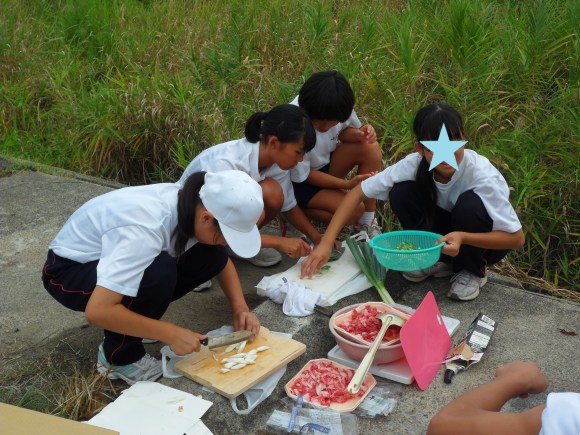
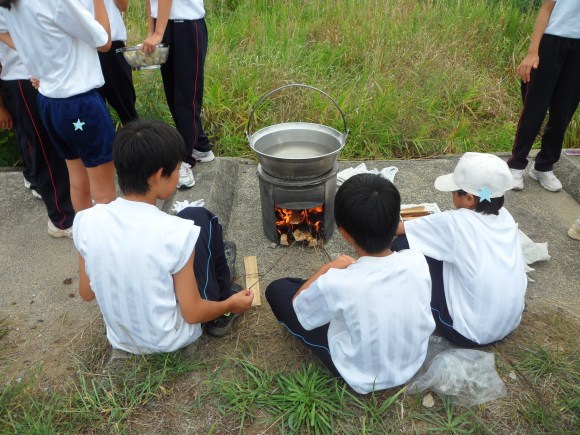
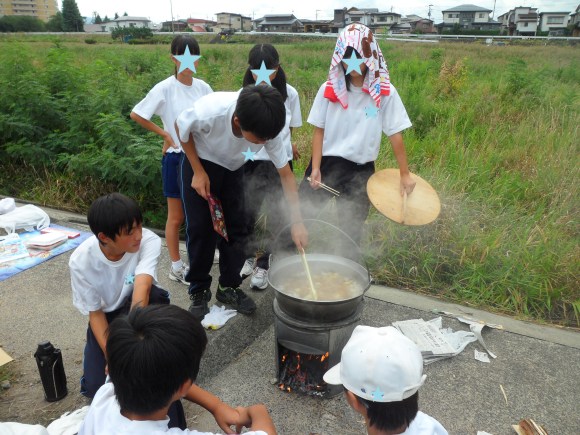
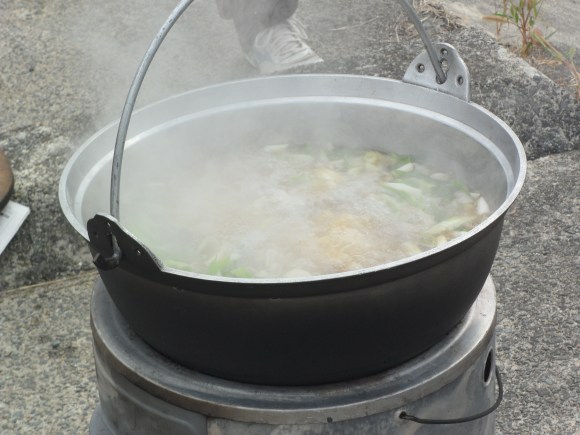
 We try making imoni, the beloved taro and beef stew of northern Japan【SoraKitchen】
We try making imoni, the beloved taro and beef stew of northern Japan【SoraKitchen】 North Japan prefecture creates guide to help new foreign workers understand local language quirks
North Japan prefecture creates guide to help new foreign workers understand local language quirks New ultra-stylish, extra-traditional Shinkansen has tatami floors, foot baths
New ultra-stylish, extra-traditional Shinkansen has tatami floors, foot baths Domino’s Pizza is actually training reindeer for delivery in northern Japan
Domino’s Pizza is actually training reindeer for delivery in northern Japan Local tourism center in northern Japan makes visitors feel like they’ve crossed over into Korea
Local tourism center in northern Japan makes visitors feel like they’ve crossed over into Korea Demon Slayer: Kimetsu no Yaiba gets new roller coaster attractions and food at Universal Studios Japan
Demon Slayer: Kimetsu no Yaiba gets new roller coaster attractions and food at Universal Studios Japan How to order snacks on a Shinkansen bullet train in Japan
How to order snacks on a Shinkansen bullet train in Japan Nintendo history you can feel – Super NES, N64, and GameCube controllers become capsule toys
Nintendo history you can feel – Super NES, N64, and GameCube controllers become capsule toys New Nintendo Lego kit is a beautiful piece of moving pixel art of Mario and Yoshi【Photos】
New Nintendo Lego kit is a beautiful piece of moving pixel art of Mario and Yoshi【Photos】 McDonald’s adds a new Cheese Bacon Potato Pie to its menu in Japan for a limited time
McDonald’s adds a new Cheese Bacon Potato Pie to its menu in Japan for a limited time Japan’s new difficult-to-drink-from beer glass protects your liver, but it’s a brutal experience
Japan’s new difficult-to-drink-from beer glass protects your liver, but it’s a brutal experience Burger King Japan suddenly adds Dr. Pepper and Dr. Pepper floats to its menu nationwide
Burger King Japan suddenly adds Dr. Pepper and Dr. Pepper floats to its menu nationwide Japan’s foreign population reaches historic milestone following largest-ever single-year surge
Japan’s foreign population reaches historic milestone following largest-ever single-year surge Shinjuku izakaya’s all-you-can-eat-and-drink plan is one of Tokyo’s best secret cheap eats
Shinjuku izakaya’s all-you-can-eat-and-drink plan is one of Tokyo’s best secret cheap eats Creator of Rurouni Kenshin manga/anime avoids jail time in child pornography possession case
Creator of Rurouni Kenshin manga/anime avoids jail time in child pornography possession case Hello, cosmetics! Clinique teams up with Hello Kitty this summer for first-time collaboration
Hello, cosmetics! Clinique teams up with Hello Kitty this summer for first-time collaboration “The most Delicious Cup Noodle in history” – Japan’s French Cup Noodle wins our heart【Taste test】
“The most Delicious Cup Noodle in history” – Japan’s French Cup Noodle wins our heart【Taste test】 Starbucks releases a cute Frappuccino and Unicorn Cake…but not in Japan
Starbucks releases a cute Frappuccino and Unicorn Cake…but not in Japan Kyoto Tower mascot termination reveals dark side behind cute Japanese characters
Kyoto Tower mascot termination reveals dark side behind cute Japanese characters McDonald’s Japan’s Soft Twist Tower: A phantom ice cream only sold at select branches
McDonald’s Japan’s Soft Twist Tower: A phantom ice cream only sold at select branches Yabai Ramen: What makes this Japanese ramen so dangerous?
Yabai Ramen: What makes this Japanese ramen so dangerous? Finally! Nintendo Japan expands Switch 8-bit controller sales to everybody, Online member or not
Finally! Nintendo Japan expands Switch 8-bit controller sales to everybody, Online member or not Japanese government wants to build luxury resorts in all national parks for foreign tourists
Japanese government wants to build luxury resorts in all national parks for foreign tourists To combat declining birth rate, Japan to begin offering “Breeding Visas” to foreigners
To combat declining birth rate, Japan to begin offering “Breeding Visas” to foreigners 10 things you should buy at 7-Eleven in Japan
10 things you should buy at 7-Eleven in Japan Studio Ghibli releases anime heroine cosplay dresses that are super comfy to wear
Studio Ghibli releases anime heroine cosplay dresses that are super comfy to wear Woman charged for driving suitcase without a license in Osaka
Woman charged for driving suitcase without a license in Osaka Studio Ghibli unveils My Neighbour Totoro miniature house model
Studio Ghibli unveils My Neighbour Totoro miniature house model Kyoto experiencing problems with foreign tourists not paying for bus fares, but not on purpose
Kyoto experiencing problems with foreign tourists not paying for bus fares, but not on purpose Fighting mild hunger with a Japanese soda that turns into jelly in the stomach【Taste test】
Fighting mild hunger with a Japanese soda that turns into jelly in the stomach【Taste test】 Studio Ghibli’s Howl’s Moving Castle tapestry unveiled in Japan for first time
Studio Ghibli’s Howl’s Moving Castle tapestry unveiled in Japan for first time McDonald’s new Happy Meals offer up cute and practical Sanrio lifestyle goods
McDonald’s new Happy Meals offer up cute and practical Sanrio lifestyle goods Sales of Japan’s most convenient train ticket/shopping payment cards suspended indefinitely
Sales of Japan’s most convenient train ticket/shopping payment cards suspended indefinitely Sold-out Studio Ghibli desktop humidifiers are back so Totoro can help you through the dry season
Sold-out Studio Ghibli desktop humidifiers are back so Totoro can help you through the dry season Japanese government to make first change to romanization spelling rules since the 1950s
Japanese government to make first change to romanization spelling rules since the 1950s Foreigner’s request for help in Tokyo makes us sad for the state of society
Foreigner’s request for help in Tokyo makes us sad for the state of society Ghibli founders Toshio Suzuki and Hayao Miyazaki contribute to Japanese whisky Totoro label design
Ghibli founders Toshio Suzuki and Hayao Miyazaki contribute to Japanese whisky Totoro label design Doraemon found buried at sea as scene from 1993 anime becomes real life【Photos】
Doraemon found buried at sea as scene from 1993 anime becomes real life【Photos】 Tokyo’s most famous Starbucks is closed
Tokyo’s most famous Starbucks is closed Princesses, fruits, and blacksmiths: Study reveals the 30 most unusual family names in Japan
Princesses, fruits, and blacksmiths: Study reveals the 30 most unusual family names in Japan When do Japanese women have their first kiss? Survey finds gap between different parts of Japan
When do Japanese women have their first kiss? Survey finds gap between different parts of Japan These little-known Japanese plastic bags can be a lifesaver in times of disaster
These little-known Japanese plastic bags can be a lifesaver in times of disaster East meet West in kitchen as Japanese ingredient makes Western-style cream stew more delicious
East meet West in kitchen as Japanese ingredient makes Western-style cream stew more delicious Online survey sheds light on prefectural personality rankings of Japanese people
Online survey sheds light on prefectural personality rankings of Japanese people The ultimate in kawaii cookware — Mickey and friends turn themselves into adorable pots!
The ultimate in kawaii cookware — Mickey and friends turn themselves into adorable pots! How to make tonkotsu ramen at home 【SoraKitchen】
How to make tonkotsu ramen at home 【SoraKitchen】 Japanese countryside town makes giant corn maze full of oni for summer
Japanese countryside town makes giant corn maze full of oni for summer Five of Japan’s best locations to ski and snowboard
Five of Japan’s best locations to ski and snowboard Shrine cat takes a nap in a Zen garden【Photos】
Shrine cat takes a nap in a Zen garden【Photos】 Hungry for love – 10 dishes Japanese men want their girlfriends to cook for them
Hungry for love – 10 dishes Japanese men want their girlfriends to cook for them The top 10 instances when Japanese people feel thankful to be Japanese
The top 10 instances when Japanese people feel thankful to be Japanese From hot spring to hot pot: One restaurant in Tokyo is actually serving wild monkey
From hot spring to hot pot: One restaurant in Tokyo is actually serving wild monkey Eva tie-wearing Japanese minister resigns after saying “it’s a good thing the tsunami hit Tohoku”
Eva tie-wearing Japanese minister resigns after saying “it’s a good thing the tsunami hit Tohoku” Foo Fighters unveil an exclusive new Japanese sake
Foo Fighters unveil an exclusive new Japanese sake What’s the best way to eat Japanese cream stew and rice, “together” or “separate?”【Survey】
What’s the best way to eat Japanese cream stew and rice, “together” or “separate?”【Survey】
Leave a Reply